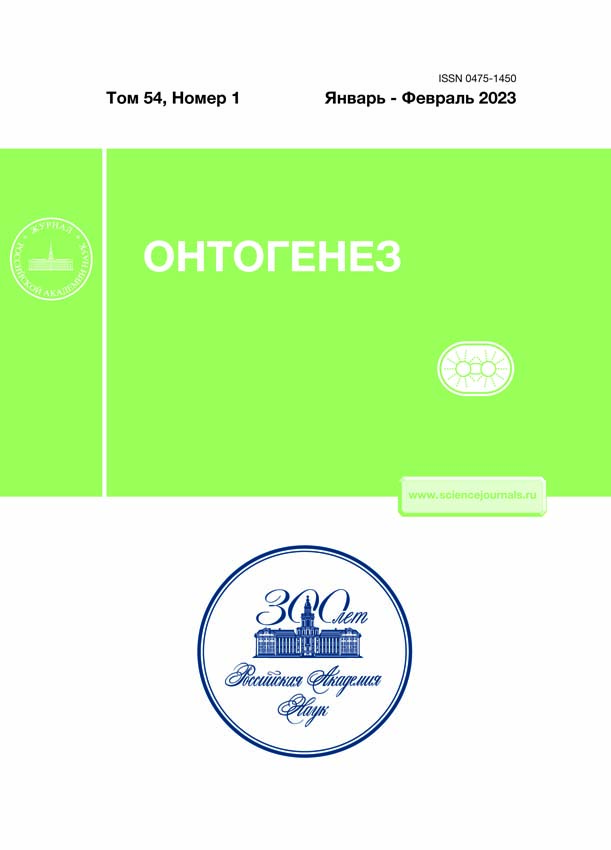An Induced Pluripotent Stem Cell Line (ICGi023-A) Obtained from a Patient with Parkinson’s Disease Associated Polymorphisms in LRRK2 and PINK1 Genes
- Authors: Malakhova A.A.1,2,3, Kovalenko L.V.4, Rzaev J.A.5, Khabarova E.A.1,5, Vyatkin Y.V.6, Minina J.M.1, Medvedev S.P.1,2,3, Grigor’eva E.V.1,2,3, Pavlova S.V.1,2,3, Zakian S.M.1,2,3
-
Affiliations:
- Institute of Cytology and Genetics, Siberian Branch of the Russian Academy of Sciences
- Meshalkin National Medical Research Center, Ministry of Health of the Russian Federation
- Institute of Chemical Biology and Fundamental Medicine, Siberian Branch of the Russian Academy of Sciences
- Surgut State University
- FSBI Federal Neurosurgical Center
- Novosibirsk State University
- Issue: Vol 54, No 1 (2023)
- Pages: 96-104
- Section: Collection of pluripotent stem cell lines
- URL: https://ruspoj.com/0475-1450/article/view/669972
- DOI: https://doi.org/10.31857/S047514502301007X
- EDN: https://elibrary.ru/FRKMTC
- ID: 669972
Cite item
Abstract
Parkinson’s disease is a neurodegenerative disorder with a range of causes, only 5% of which can be explained by known genetic variants. We revealed polymorphisms in LRRK2 and PINK1 genes of a person with parkinsonism cases in family anamnesis. PBMCs of the patient were reprogrammed with a non-integrating episomal vectors to generate an induced pluripotent stem cell (iPSC) line. The iPSC line showed typical morphology and normal karyotype, expressed pluripotency markers, and was capable to differentiate into three germ layers. The iPSCs represent a valuable tool for investigating a potential implication of the genetic variants into the Parkinson’s disease pathogenesis.
About the authors
A. A. Malakhova
Institute of Cytology and Genetics, Siberian Branch of the Russian Academy of Sciences; Meshalkin National Medical Research Center, Ministry of Health of the Russian Federation; Institute of Chemical Biology and Fundamental Medicine, Siberian Branch of the Russian Academy of Sciences
Author for correspondence.
Email: amal@bionet.nsc.ru
Russia, 630090, Novosibirsk, prosp. acad. Lavrentieva, 10; Russia, 630055, Novosibirsk, ul. Rechkunovskaya, 15; Russia, 630090, Novosibirsk, prosp. acad. Lavrentieva, 8
L. V. Kovalenko
Surgut State University
Email: amal@bionet.nsc.ru
Russia, 628403, Surgut, prosp. Lenina, 1
J. A. Rzaev
FSBI Federal Neurosurgical Center
Email: amal@bionet.nsc.ru
Russia, 630087, Novosibirsk, ul. Nemirovicha-Danchenko, 132/1
E. A. Khabarova
Institute of Cytology and Genetics, Siberian Branch of the Russian Academy of Sciences; FSBI Federal Neurosurgical Center
Email: amal@bionet.nsc.ru
Russia, 630090, Novosibirsk, prosp. acad. Lavrentieva, 10; Russia, 630087, Novosibirsk, ul. Nemirovicha-Danchenko, 132/1
Y. V. Vyatkin
Novosibirsk State University
Email: amal@bionet.nsc.ru
Russia, 630090, Novosibirsk, ul. Pirogova, 2
J. M. Minina
Institute of Cytology and Genetics, Siberian Branch of the Russian Academy of Sciences
Email: amal@bionet.nsc.ru
Russia, 630090, Novosibirsk, prosp. acad. Lavrentieva, 10
S. P. Medvedev
Institute of Cytology and Genetics, Siberian Branch of the Russian Academy of Sciences; Meshalkin National Medical Research Center, Ministry of Health of the Russian Federation; Institute of Chemical Biology and Fundamental Medicine, Siberian Branch of the Russian Academy of Sciences
Email: amal@bionet.nsc.ru
Russia, 630090, Novosibirsk, prosp. acad. Lavrentieva, 10; Russia, 630055, Novosibirsk, ul. Rechkunovskaya, 15; Russia, 630090, Novosibirsk, prosp. acad. Lavrentieva, 8
E. V. Grigor’eva
Institute of Cytology and Genetics, Siberian Branch of the Russian Academy of Sciences; Meshalkin National Medical Research Center, Ministry of Health of the Russian Federation; Institute of Chemical Biology and Fundamental Medicine, Siberian Branch of the Russian Academy of Sciences
Email: amal@bionet.nsc.ru
Russia, 630090, Novosibirsk, prosp. acad. Lavrentieva, 10; Russia, 630055, Novosibirsk, ul. Rechkunovskaya, 15; Russia, 630090, Novosibirsk, prosp. acad. Lavrentieva, 8
S. V. Pavlova
Institute of Cytology and Genetics, Siberian Branch of the Russian Academy of Sciences; Meshalkin National Medical Research Center, Ministry of Health of the Russian Federation; Institute of Chemical Biology and Fundamental Medicine, Siberian Branch of the Russian Academy of Sciences
Email: amal@bionet.nsc.ru
Russia, 630090, Novosibirsk, prosp. acad. Lavrentieva, 10; Russia, 630055, Novosibirsk, ul. Rechkunovskaya, 15; Russia, 630090, Novosibirsk, prosp. acad. Lavrentieva, 8
S. M. Zakian
Institute of Cytology and Genetics, Siberian Branch of the Russian Academy of Sciences; Meshalkin National Medical Research Center, Ministry of Health of the Russian Federation; Institute of Chemical Biology and Fundamental Medicine, Siberian Branch of the Russian Academy of Sciences
Email: amal@bionet.nsc.ru
Russia, 630090, Novosibirsk, prosp. acad. Lavrentieva, 10; Russia, 630055, Novosibirsk, ul. Rechkunovskaya, 15; Russia, 630090, Novosibirsk, prosp. acad. Lavrentieva, 8
References
- Bloem B.R., Okun M.S., Klein C. Parkinson’s disease // Lancet. 2021. V. 397. № 10291. P. 2284–2303.
- Choppa P.C., Vojdani A., Tagle C. et al. Multiplex PCR for the detection of Mycoplasma fermentans, M. hominis and M. penetrans in cell cultures and blood samples of patients with chronic fatigue syndrome // Mol. Cell Probes. 1998. V. 12. № 5. P. 301–308.
- Cowan C.A., Klimanskaya I., McMahon J. et al. Derivation of embryonic stem-cell lines from human blastocysts // N. Engl. J. Med. 2004. V. 350. № 13. P. 1353–1356.
- Grigor’eva E.V., Malankhanova T.B., Surumbayeva A. et al. Generation of GABAergic striatal neurons by a novel iPSC differentiation protocol enabling scalability and cryopreservation of progenitor cells // Cytotechnology. 2020. V. 72. № 5. P. 649–663.
- Okita K., Yamakawa T., Matsumura Y. et al. An efficient nonviral method to generate integration-free human-induced pluripotent stem cells from cord blood and peripheral blood cells // Stem Cells. 2013. V. 31. № 3. P. 458–466.
Supplementary files











